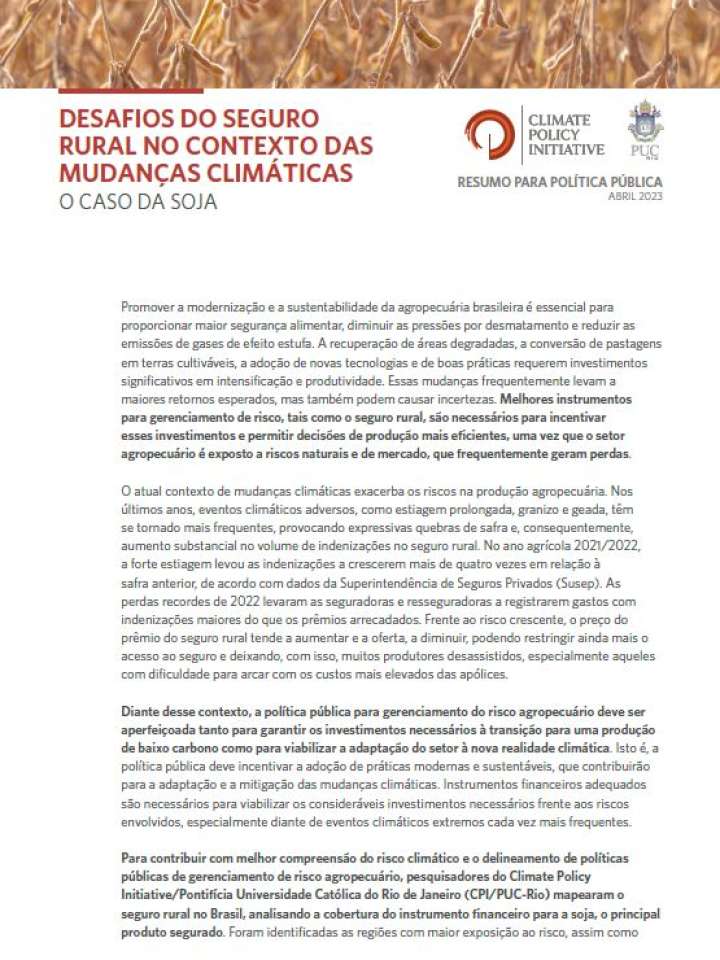Challenges of rural insurance in the context of climate change: the case of soybeans
In this publication researchers examined rural insurance in Brazil, analyzing the coverage of this financial instrument for soybeans, the main insured crop. Regions with higher risk exposure, and the distribution of rural insurance in Brazilian regions were also mapped. Researchers also investigated the most relevant climate variables to explain policy claims and agricultural production losses in Brazil, an essential factor for production variability and, consequently, for implementing public policies.
Results show that rural insurance is still limited in the country, with a strong concentration in the Midwest and South regions. The main recommendations for improving public policies for agricultural risk management are listed below:
- Insurance supply must be expanded to producers and regions with limited access to financial products, which are also more vulnerable to climate events. This is the case, for example, in MATOPIBA.
- As demonstrated in this study, insurers can use prediction models capable of extracting information from available climate variables to estimate agricultural losses. In addition to claims history, it is possible to use historical agricultural production and yield data at the municipality level, allowing for pricing policies in areas that are not yet insured.
- The Rural Insurance Premium Subsidy Program (Programa de Subvenção ao Prêmio do Seguro Rural – PSR), which subsidizes the cost of policies, should favor regions where coverage is still scarce. In areas where climate risk is high, insurers tend to increase prices, limit the supply of insurance, or even decide not to enter the market.
- The constant improvement of the Agricultural Climate Risk Zoning (Zoneamento Agrícola de Risco Climático – ZARC) should contribute to producers operating with lower risk, reducing the occurrence of claims.
- Ensuring insurers’ liquidity is essential in an increasing risk scenario. Insurers must have instruments to protect themselves from generalized agricultural losses, which generate difficulties in covering claim payments. In addition to boosting the activity of reinsurers, it is important to advance with the regulation and implementation of a public-private fund that can be activated in these situations.
- Public policy must be aligned with environmental preservation objectives, favoring sustainable and low-carbon agricultural practices, and producers who do not engage in deforestation.
Explore further
